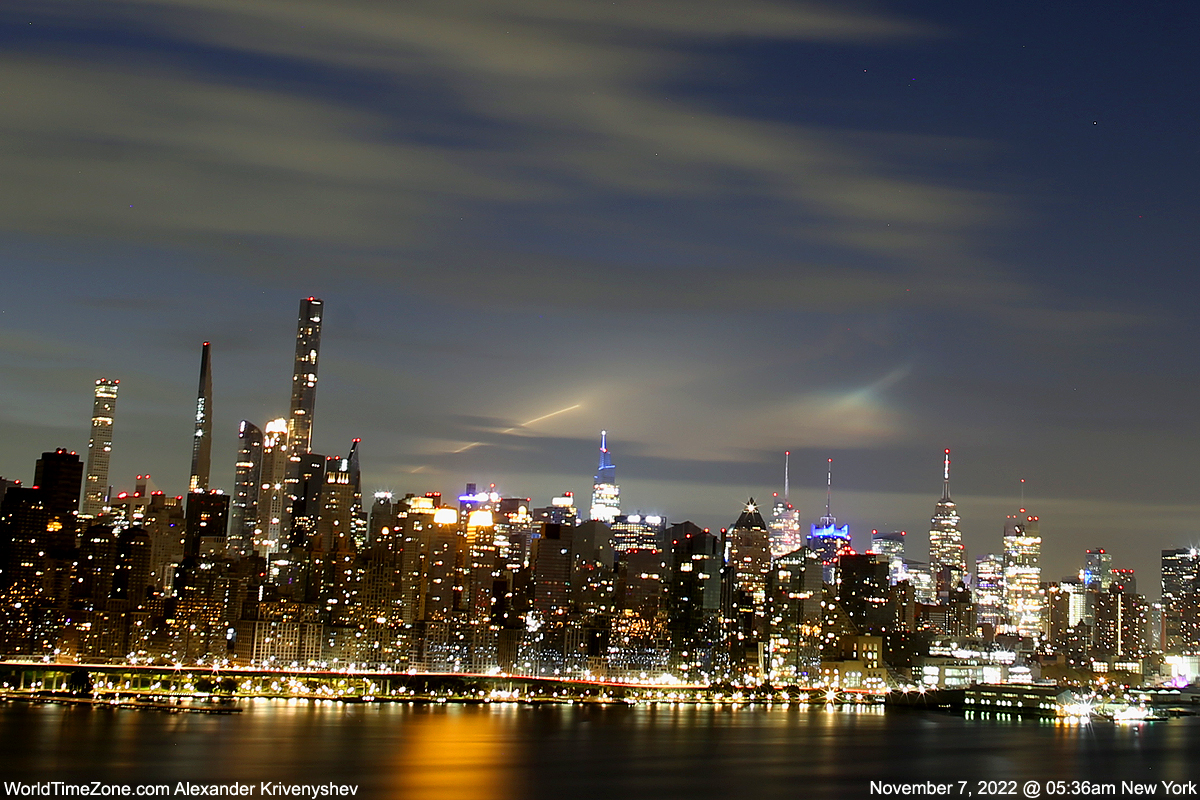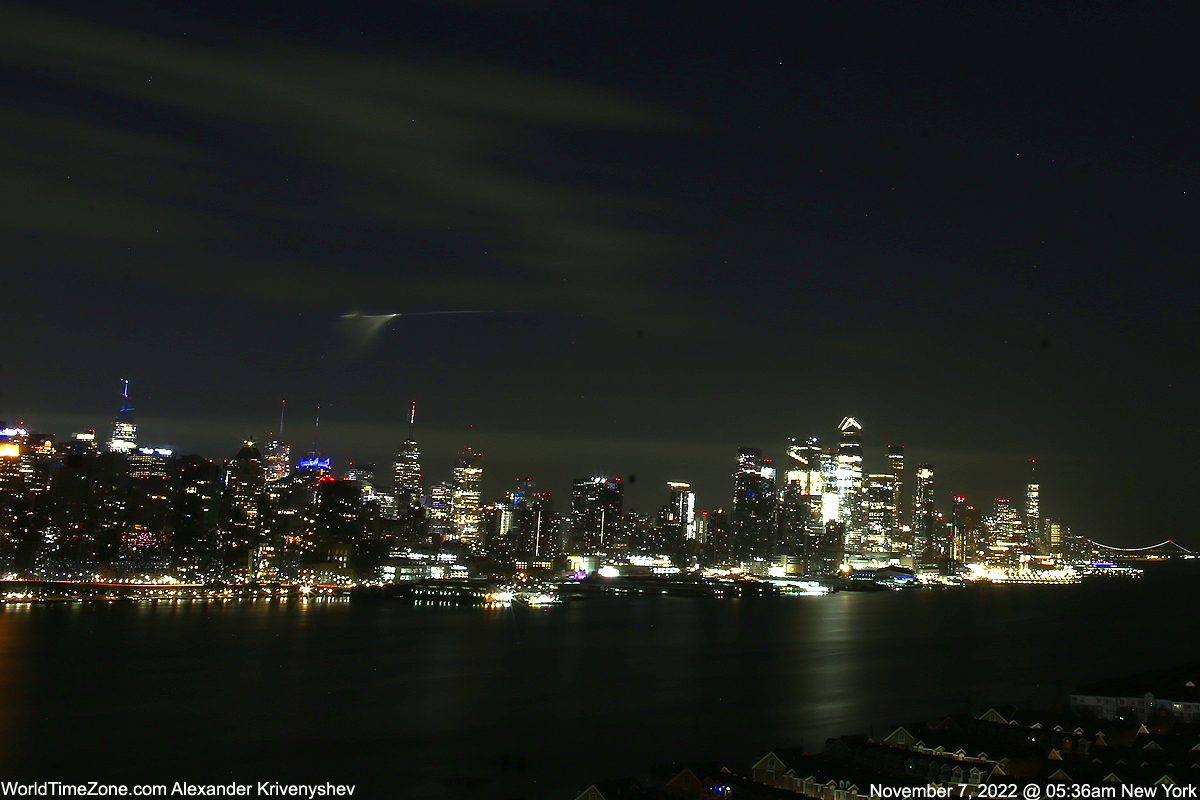Antares rocket soars over New York City in skywatcher photos

New Yorkers were treated to a dramatic show over their city's famous skyline on Monday morning (Nov. 7) — if they got up early enough.
The fireworks came courtesy of Northrop Grumman's Antares rocket, which launched the company's robotic Cygnus cargo spacecraft toward the International Space Station (ISS) from Virginia at 5:32 a.m. EST (1032 GMT).
The launch was visible from a wide swath of the U.S. East Coast — including from Gutenberg, New Jersey, where skywatcher Alexander Krivenyshev captured several gorgeous shots of the rocket above New York City.
"Those who woke up at 5:35 a.m. were treated to a spectacular show lasting 30-40 seconds, with an amazing spiral vapor trail from a separated booster rocket viewed above New York City this morning," Krivenyshev, the president of WorldTimeZone.com, wrote in an email to Space.com.
Related: Facts about Cygnus, Northrop Grumman's cargo spacecraft

The Cygnus vehicle — which Northrop Grumman named after Sally Ride, the first American woman to reach space — is carrying about 4.1 tons (3.7 metric tons) of scientific experiments and supplies to the ISS.
The freighter will arrive at the orbiting lab on Wednesday (Nov. 9), if all goes according to plan. And there has been a hiccup already: As of Monday evening, only one of Cygnus' two solar arrays had deployed properly.
Breaking space news, the latest updates on rocket launches, skywatching events and more!
Northrop Grumman is troubleshooting the problem and has expressed confidence that the SS Sally Ride can meet up with the orbiting lab even if the second solar array never unfurls, NASA officials said in a blog post on Monday.
Cygnus isn't the only robotic freighter that carries cargo up to the space station; Russia's Progress vehicle and SpaceX's Dragon capsule do so as well.
Dragon is a reusable spacecraft that comes back to Earth safely for soft, parachute-aided ocean splashdowns. Progress and Cygnus, by contrast, are expendable, burning up in our planet's atmosphere at the end of their missions.
Mike Wall is the author of "Out There" (Grand Central Publishing, 2018; illustrated by Karl Tate), a book about the search for alien life. Follow him on Twitter @michaeldwall. Follow us on Twitter @Spacedotcom or Facebook.

Michael Wall is a Senior Space Writer with Space.com and joined the team in 2010. He primarily covers exoplanets, spaceflight and military space, but has been known to dabble in the space art beat. His book about the search for alien life, "Out There," was published on Nov. 13, 2018. Before becoming a science writer, Michael worked as a herpetologist and wildlife biologist. He has a Ph.D. in evolutionary biology from the University of Sydney, Australia, a bachelor's degree from the University of Arizona, and a graduate certificate in science writing from the University of California, Santa Cruz. To find out what his latest project is, you can follow Michael on Twitter.
